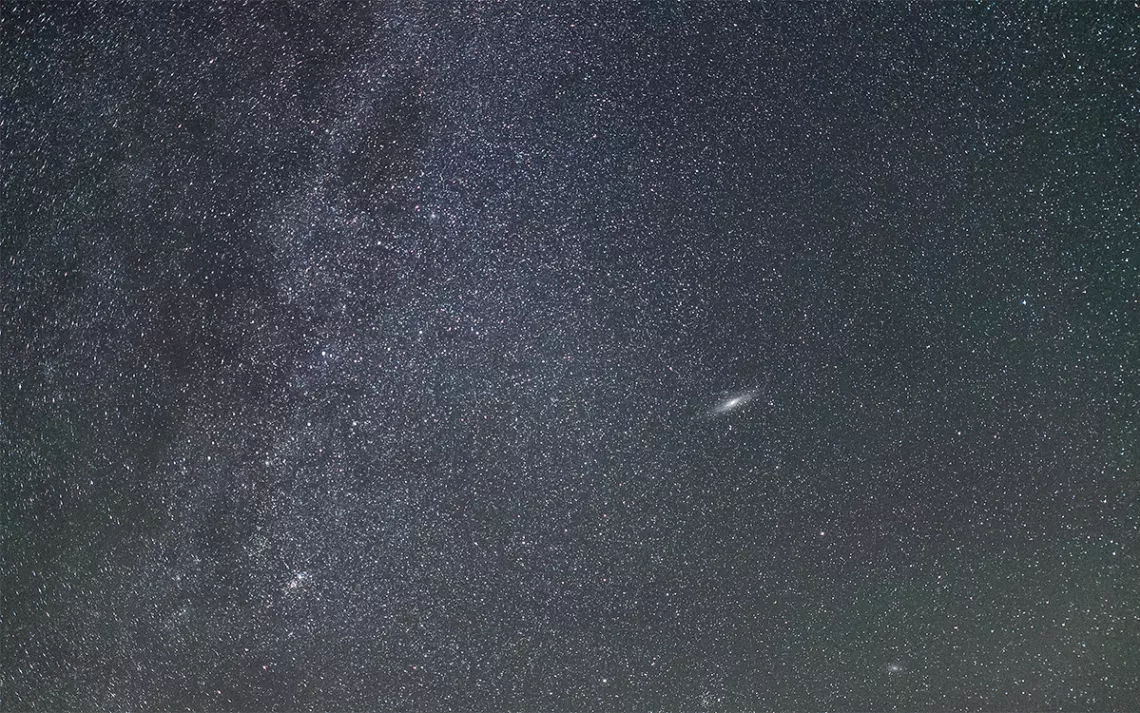November Astronomical Highlights: Disappearing Planets and a Comet
The sky gets busier as the night gets longer this month

Photo by ToL_U4F/iStock
Plenty is happening in the night skies this month.
The full moon takes place in the early morning hours on November 4 for the eastern half of the United States and before midnight on November 3 for the western half of the country. November’s full moon is sometimes called the Beaver Moon or Frost Moon.
On November 5, the star Aldebaran disappears behind the moon under the lit side before reappearing on the unlit side—a phenomenon known as occultation. Look east-northeast just after sunset as the moon is rising. The farther you are to the north and to the east in the United States, the more of the event you can see.
November is your last chance to catch a glimpse of the planets in the evening sky before they sneak away to appear only in the morning in December and the beginning of 2018. Jupiter and Venus are already shining like bright beacons in the early A.M., but Mercury and Saturn are still visible at night.
Saturn is higher above the horizon but dimmer than Mercury. Look southwest for the ringed planet among the stars of the Milky Way. On November 19, it will sit to the upper left of a slender young moon, and Mercury will sit just to the left. The trio sets soon after the sun. On the following night, November 20, Saturn will be next to a marginally larger crescent moon, with Mercury just below. Mercury will rise to be nearly even with Saturn, but then both will quickly sink toward the sun.
November’s best meteor shower is the Leonids, which peaks overnight November 17–18. Expect about 15 meteors an hour in fast-moving streaks. These bits of dust were left behind by Comet 55P/Tempel-Tuttle.
Speaking of comets, you might have a chance to see one this month. The All-Sky Automated Survey for Supernovae discovered a comet in July, which was named 2017 O1 ASASSN. The fuzzy-headed object, visible through binoculars or a telescope, is cruising through the constellation Camelopardalis in the northeastern sky and climbing toward the North Star, Polaris, which it will reach around Christmas. Look for a blurry patch of light floating in front of a background of stars.
There are lots of other objects to check out in this region of the sky. As you scour Camelopardalis for the comet, you may run across Kemble’s Cascade, a pretty chain of stars at magnitude 5. Camelopardalis is found below the W shape of Cassiopeia and above the constellation Auriga, which has a bright flickering star named Capella.
One of the most notable fall stars, Capella sits close to the horizon at this time of year, shining through a thick cross-section of atmosphere. It flickers as it passes through Earth’s wavering layers of air, making it appear to flash multiple colors and sometimes be mistaken for a UFO.
Scan east with your binoculars, into Perseus and below Cassiopeia, to find a famous grouping of stars known as the Double Cluster. Sharp-eyed viewers located at a sufficiently dark site will be able to spot the pair of clusters without magnification. They are 7,400 light-years from us and 100 light-years from each other.
Next, scan east a bit farther to reach the Andromeda Galaxy. The closest large spiral to Earth, Andromeda has a wispy oval shape with a brighter center. The light that you see left its source 2.3 million years ago. To our eyes, comets and galaxies look quite similar even though the objects are hugely different in size and location to Earth. Comet hunters were the first to catalog galaxies and note that these comet-like objects in the sky did not move over time as comets do.
 The Magazine of The Sierra Club
The Magazine of The Sierra Club



